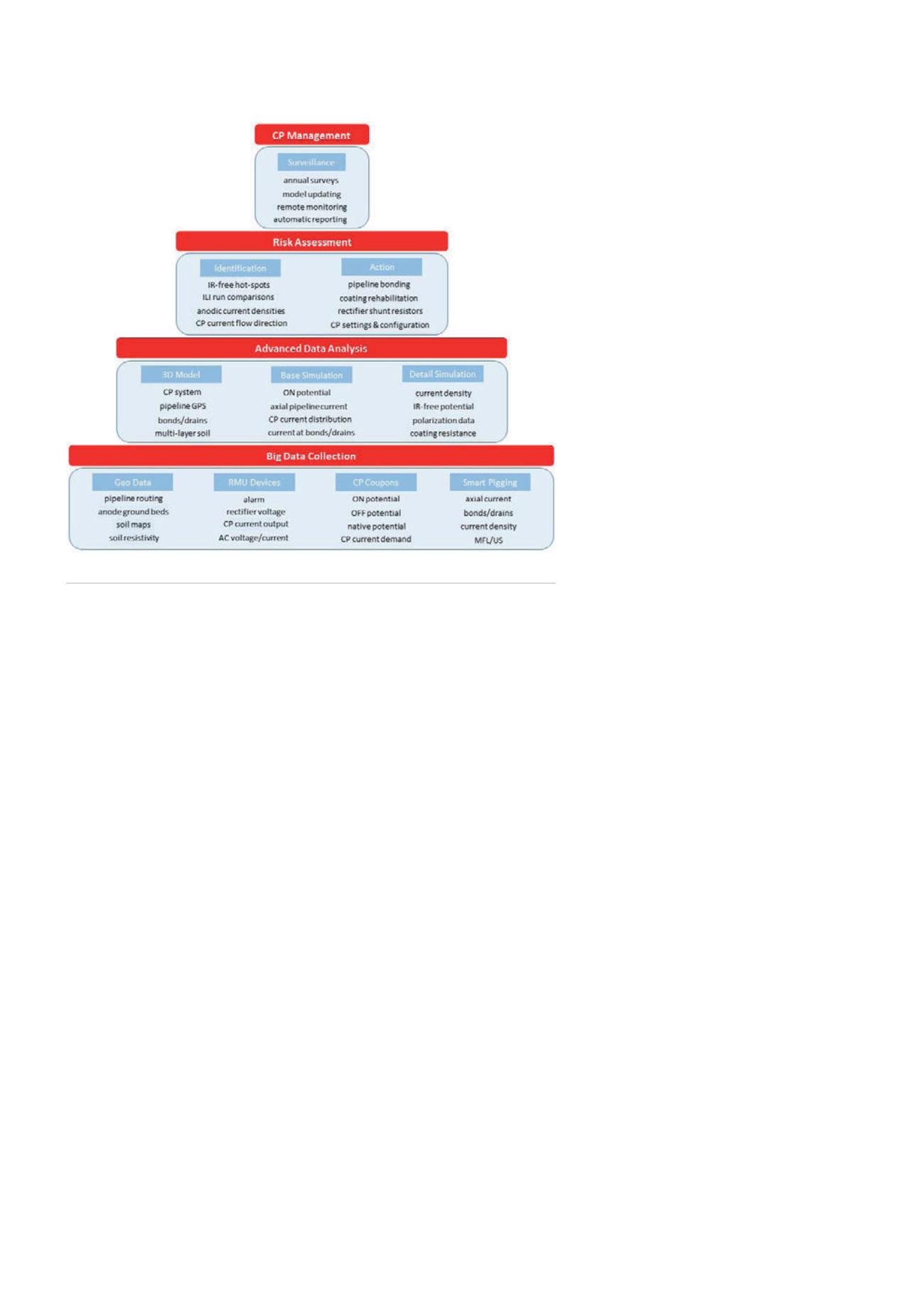
CP. A more holistic and sophisticated approach is necessary
to achieve efficient CP management of a multiple pipeline
corridor.
Challenging unbalanced CP systems
CP of pipelines has demonstrated its value since the late
1940s. The effectiveness of the corrosion protection method
is relatively well understood and straightforward for simple
configurations, such as single pipelines or storage tanks.
Newer grades of steel with less carbon and development
of higher performance coating materials have generally
improved the overall quality of the infrastructure, resulting
in better resistance to external corrosion. However, the risk
for external corrosion can increase when a pipeline network
expansion is planned within an existing corridor. Each time
a new pipeline is introduced within the corridor, significant
changes in the electrical properties of the new network
can occur and a shift in CP current distribution between
lines is not unusual. This can create imbalance within the CP
system, where back feeding of current can occur at rectifiers.
Identifying the critical areas that cause the instability of the
CP system is sometimes difficult to achieve with conventional
CP evaluation techniques. The information collected on the
pipelines are usually not discrete measurements that lead to
inconsistent or unreliable results because:
)
Measured ON potentials are rather mixed values.
)
Cathodic/anodic current exchange may not stabilise
within typical OFF cycle due to capacitive differences
between the coatings.
)
Measurements may be influenced by
significant IR-drop because of residual
currents flowing between the pipelines.
Additionally, high-voltage power lines
may enter the ROW and cause alternating
current (AC) induced corrosion. It has been
established that control of AC corrosion
must be done in conjunction with
appropriate CP settings.
Enbridge operates the world’s longest
and most complex crude oil and liquid
hydrocarbon transportation system having
close to 25 000 km (15 500 miles) of pipeline
throughout North America. Areas of the
mainline corridor contain up to seven
parallel pipelines within the same ROW. The
common practice with facility expansion
has been to connect new pipelines into a
CP system common with the existing lines.
Upgrades are consequently made, which
include installation of auxiliary systems to
satisfy the increased current demand.
Presently, the ROW includes an
assortment of pipeline vintages
(1949 - 2008) with various diameters
(12 - 48 in.) and coating types (coal tar,
PE-taped, FBE and HPCC/HPPC), which has
consequently resulted in unbalanced CP levels. Variations
in soil properties along the corridor, and the occurrence of
inadvertent electrical shorting with grounding at motorised
valve stations, have contributed to the complexity of the
problem.
The holistic approach
Consecutive inline inspection runs (MFL and US) have
detected features with corrosion growth on both the
legacy and expansion project pipelines within a mutual
corridor. Consequently, Enbridge has adopted a more
holistic approach for identifying the root cause of the
corrosion attack and strategically implementing counter
measures for stabilising the CP system.
Proper CP control requires knowledge on the coating
condition, the soil properties and the current distribution
along the pipeline, and the polarisation behaviour of the
steel surface at coating defects. Conventional CP surveys
do not reliably provide this information for such complex
pipeline systems. Therefore, the following state-of-the-art
technologies were applied:
)
CP coupons with stationary reference cells and data
loggers/RMUs.
)
Soil resistivity surveys and soil maps.
)
Remote monitoring of rectifier outputs.
)
Inline cathodic current mapping inspection.
)
Advanced computational modelling.
Figure 2.
Holistic approach for CP managing of multiple pipeline corridors.
26
World Pipelines
/
FEBRUARY 2016


